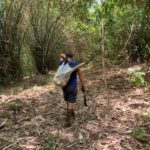Monkey orange is the collective common name for the fruit of at least five different Strychnos tree species, which occur from Durban/South Africa up to Western Tigray in Ethiopia. These fruits are highly delicious, and all parts of the trees are used for medicinal purposes.
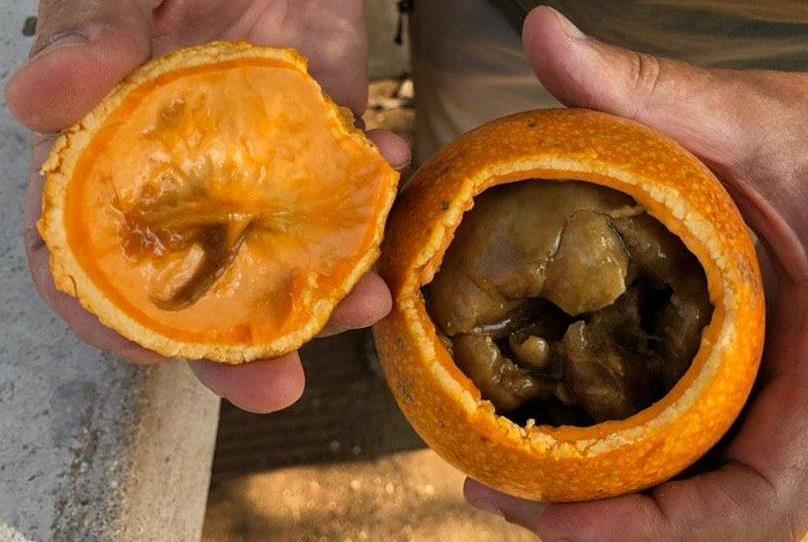
Description of tree and fruit
Depending on the species, the bark of these trees’ stems can be smooth to heavily corky and longitudinally fissured. However, the leaves of all species are characteristically 3-5 veined from the base, shiny green on the upper side and dull green on the lower side.
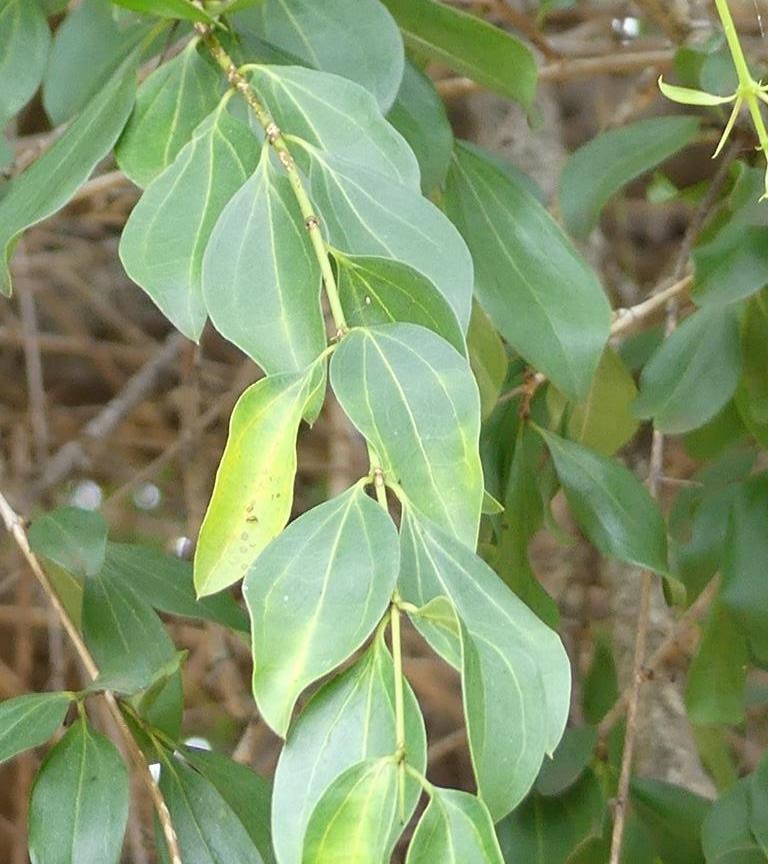
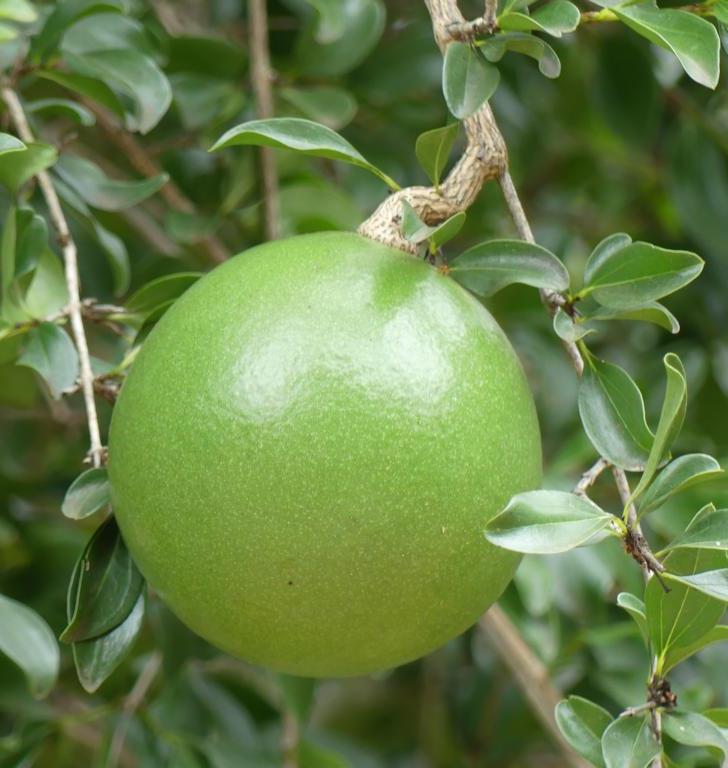
Fruits turn yellow when ripe, and there are always green and yellow fruits on the same tree. Only yellow fruits, which are still hanging on the tree, are eaten. Fruits falling to the ground are normally overripe and have already started fermenting. Harvesting time is from September to December. At that period, maize and green vegetables are scarce, but monkey oranges are a welcome source of nutrients.
Harvesting monkey orange fruits
Ripe, yellow fruits can be easily dislodged from the tree by tipping them with a stick. The fruit itself has a very hard shell. This shell can be cracked by blows with a stick, always on the same circumferential line. Using a knife to cut open the shell is highly discouraged, as a blade can easily slip off.

Once, I tried to cut open a Corky monkey orange with a knife, as I wanted to use the dried shell as a water container, but I will probably never do it again. The danger of slipping off the hard shell is too high.
Inside the shell is a cluster of tightly packed seeds, surrounded by a brownish, jelly-like fruit layer sticking tightly to the seeds. Locals are taking a wooden twig, dislodging within the open shell single seeds, and suck on these single, jelly-covered seeds. The outermost jelly layer is swallowed, and the slightly fibrous layer around the seed is sucked out. After that, they spit out the remains with the seed in the center. The reason for explaining this procedure in such detail is that the seeds are poisonous. They contain strychnine, and a purgative reflex will at least follow when swallowing them.
Benefits of monkey oranges
The reasons why monkey oranges are so sought after are threefold.
- 1 – They taste exceedingly complex and well
- 2 – They are highly nutritious
- 3 – Many parts of the trees are used medicinally
The taste of monkey orange depends a lot on the degree of ripeness. If ideally ripe, different people describe the taste differently. In our group, the different participants described the taste as follows:
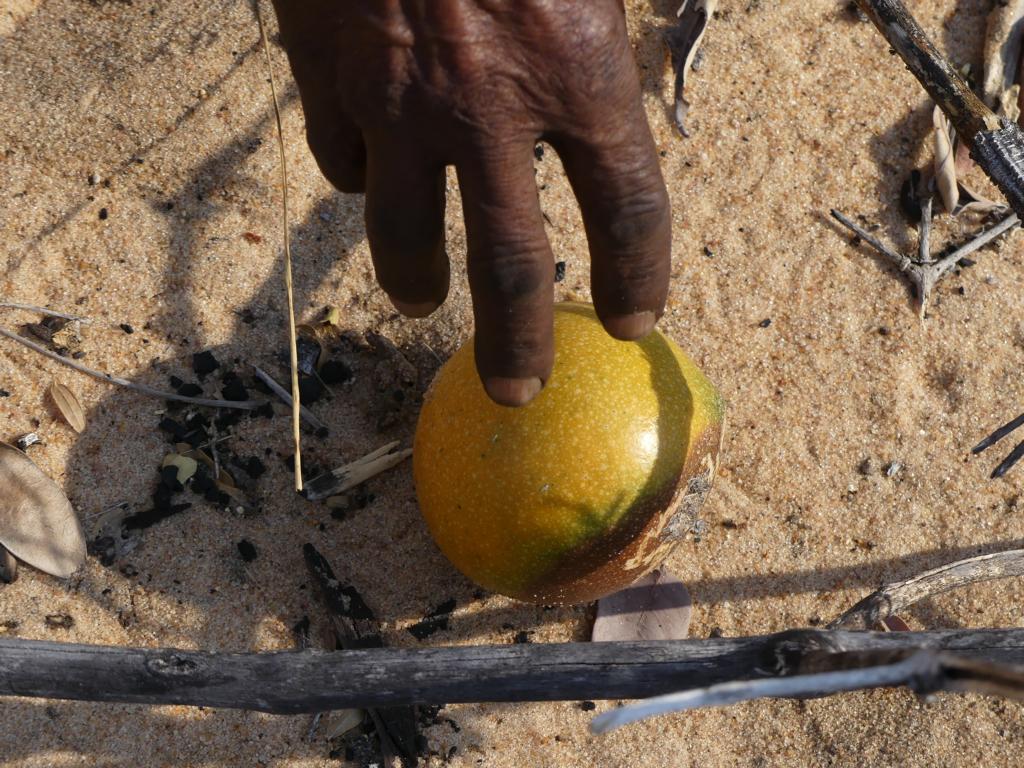
St.W.: Mix of watermelon and maracuja
S.W.: Bubble gum, followed by maracuja and watermelon
B.H.: Overripe banana and sour drops, followed by a mix of citrus fruits
K.H.: Overripe banana, maracuja & watermelon, followed by a splash of lime
An ideally ripe monkey orange tastes like an original Thai dish: A journey in the mouth from one taste to another.
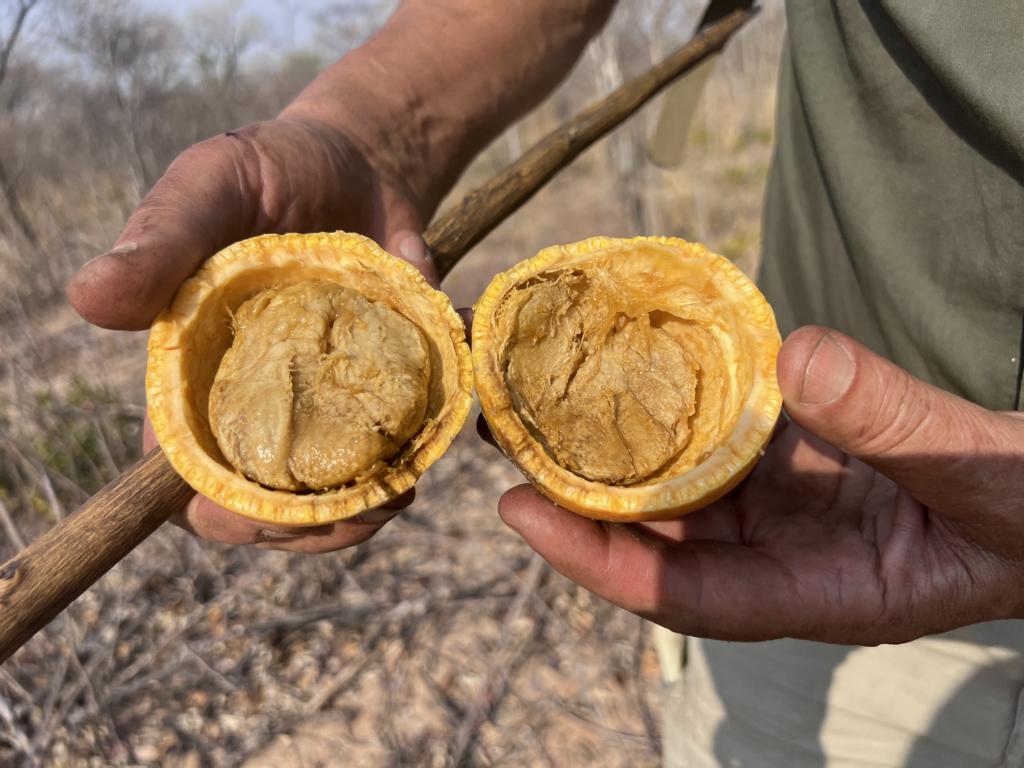
The picture above shows a Corky monkey orange (Strychnos cocculoides) that is already on the verge of being overripe. The fruit meat is no longer dark brown and shiny but is turning khaki. The taste and smell of such an overripe monkey orange no longer contains sour notes but overwhelmingly smells more like an overripe banana.
The flesh of the seeds is eaten raw and sun-dried as a fruit preserve. The seeds are removed and discarded before eating.
Nutritional value of monkey oranges
The nutritional value of one species of monkey orange, the Spiny monkey orange (Strychnos spinosa), was determined and described in the article at this link.
Strychnos spinosa got an:
- Energy value of 1923 KJ/100 g (abt. 460 kcal/100 g)
- Total soluble sugar: 16-22%
- Carbohydrate: 42-60%
- Fat: 2-31%
- Crude protein: 11-22%
- Vitamin C: 20-88 mg/100 g
- High value of Potassium
- It is an antioxidant, antimicrobial, anti-inflammatory, anti-tick (!), and anti-malaria.
Exact values can be obtained from the graphic abstract of the recommended article in the link above.
The medical value of bark, leaves, roots, and fruit seeds is high, but I’m not a medical doctor or pharmacist, so I do not want to comment.

In many African countries, it is widely believed that strychnine in the bark, unripe fruit, and other alkaloids is responsible for helping overcome the venom of certain snakes, such as Mamba. According to the foremost snake bite expert from South Africa, Johan Marais, this is ‘not true at all’. See this link.
Lessons learned about Monkey oranges:
- Monkey oranges are available at a time of the year when other fruits and vegetables are scarce
- They taste exceedingly complex and well
- Opening the hard shell is best done with a stick and circumferential blows
- The energy value is 1923 KJ or 460 kcal/100 g, which is very high
- Also, very high Vitamin C, potassium, and biological activities
.



